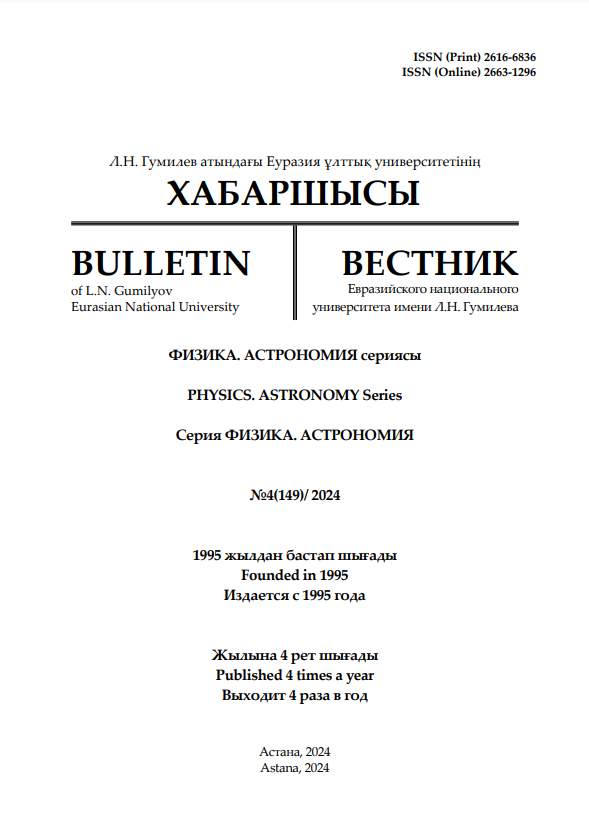КВАРКТАРДЫҢ КОВАРИАНТТЫ МОДЕЛІ НЕГІЗІНДЕ B → ρ ЫДЫРАУЫНЫҢ ФОРМ-ФАКТОРЫ ЖӘНЕ ЖАРТЫЛАЙЛЕПТОНДЫҚ БРЕНЧИНГТЕРІН ЕСЕПТЕУ
Қаралымдар: 172 / PDF жүктеулері: 97
DOI:
https://doi.org/10.32523/2616-6836-2024-149-4-88-99Кілт сөздер:
Стандартная модель, квантовая теория поля, В мезоны, форм-факторы, бренчингАңдатпа
Бұл жұмыста кварктардың ковариантты моделі негізінде B→ρ ыдырауы зерттелінді. q^2 берілген импульсінің бүкіл кинематикалық диапазонында B→ρ ыдырауы үшін форм-факторларын есептедік. Алынған форм-факторларды қолдана отырып B^+→ρ^+ l^+ l^- (мұндағы l – лептондар) жартылай лептонды ыдырау үшін бренчингтері есептелді. Алынған нәтижелер басқа теориялық мәліметтермен жақсы сәйкестік көрсетті.










